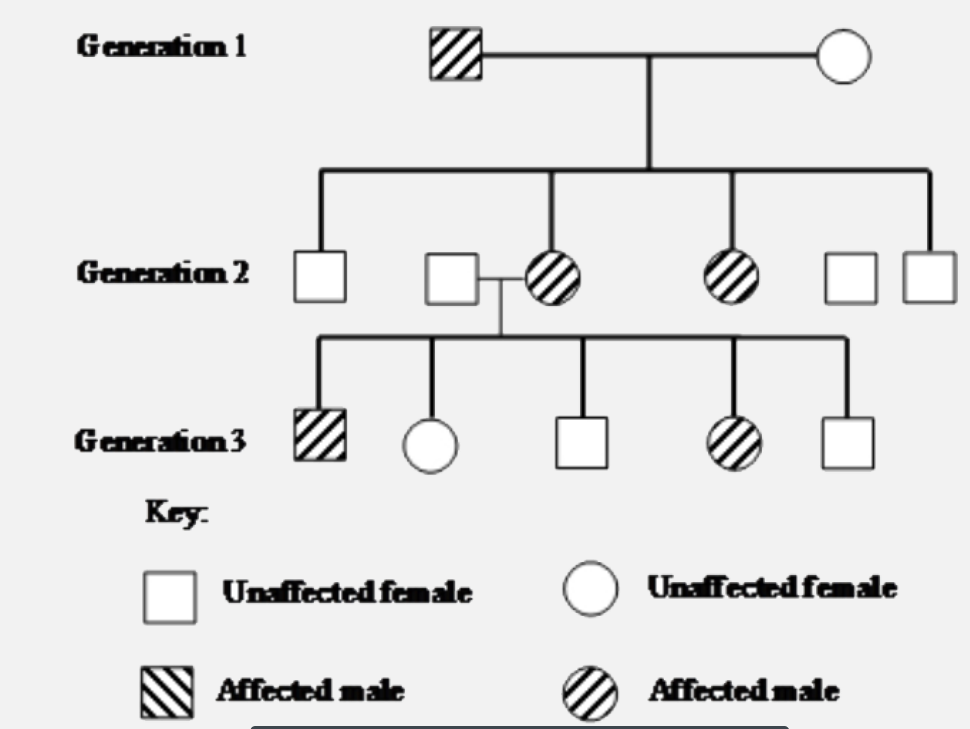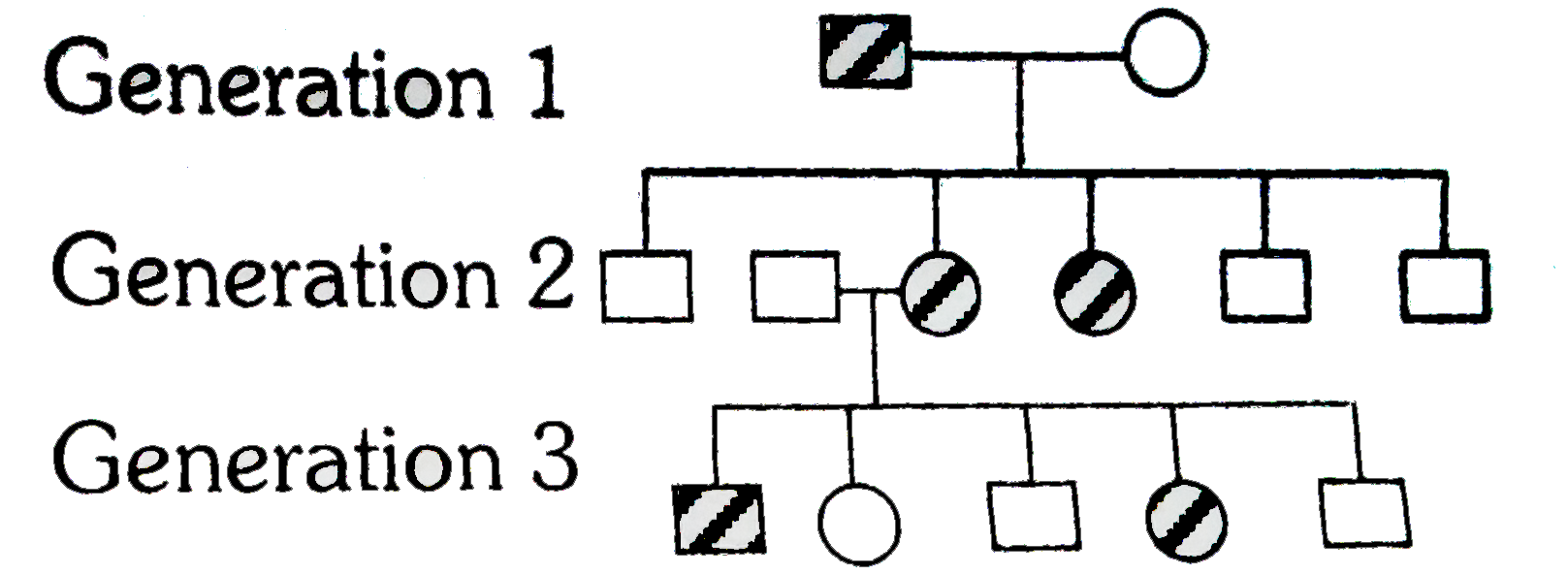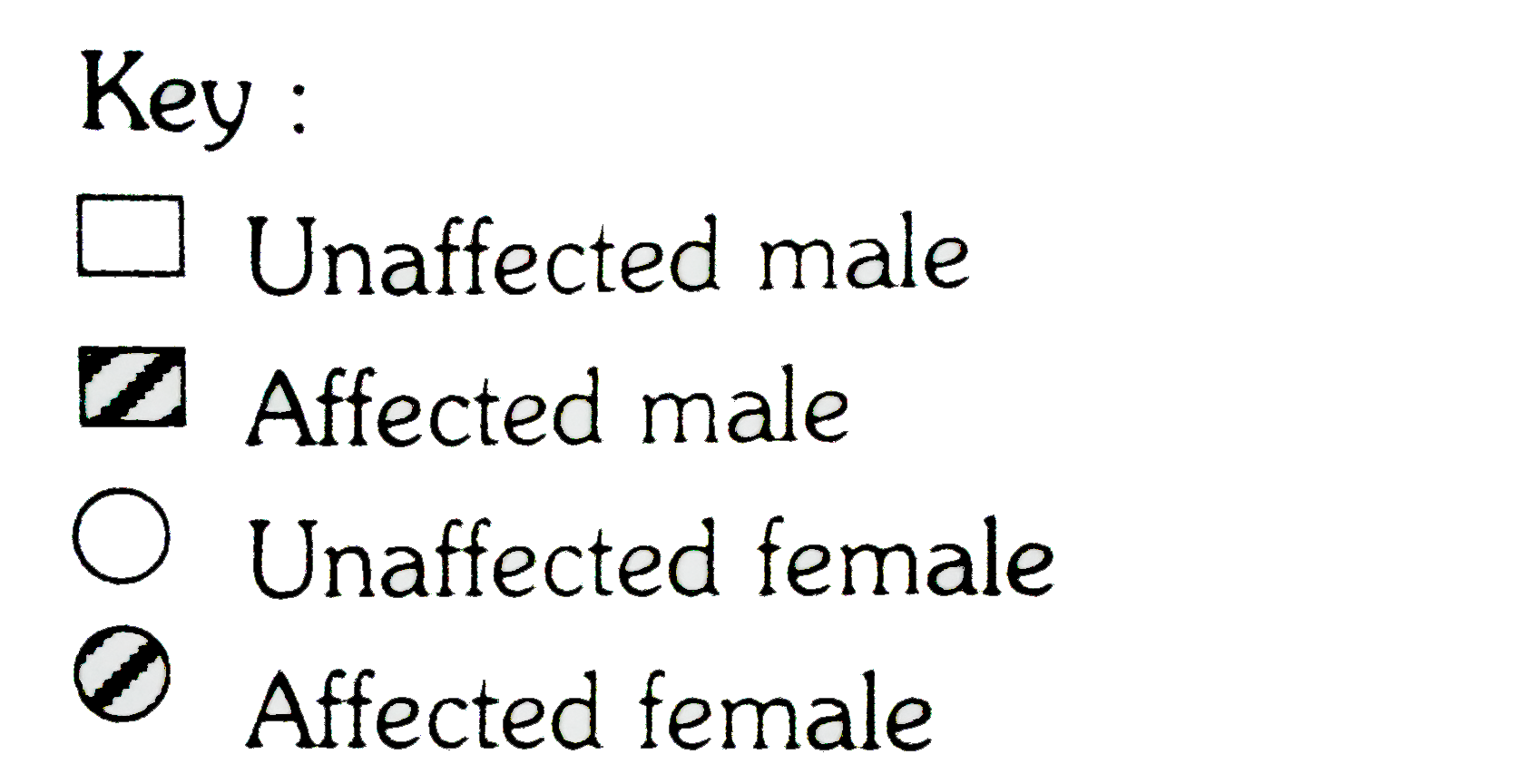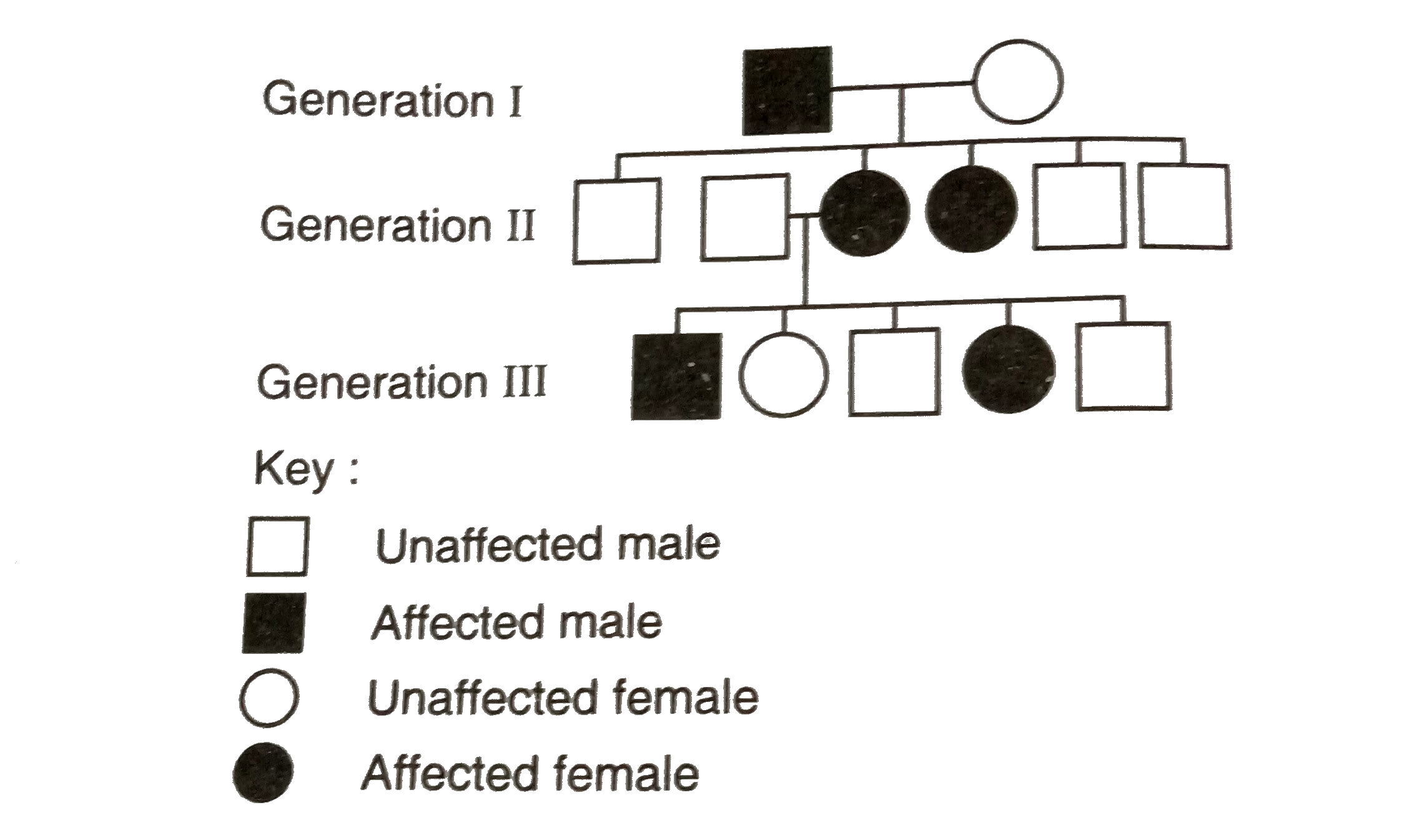There is a pedigree chart given below. It shows a particular trait. It illustrates the inheritance of a trait. On the basis of your observation of the given diagram, answer the following question:

The given chart shows a:
a) Autosomal dominant disorder
b) Autosomal recessive disorder
c) Sex-linked recessive disorder
d) Sex-linked dominant disorder
Autosomal dominant disorder
Autosomal recessive disorder
Sex-linked recessive disorder
Sex-linked dominant disorder
The correct Answer is:B
Parents are the carrier (ie. heterozygous) of the disease hence, among offspring only few shows the trait irrespective of sex. The other offsprings are either carrier or normal.
Topper's Solved these Questions
- BOOK - EDUCART PUBLICATIONCHAPTER - SAMPLE PAPER 2 EXERCISE - SECTION-C12videos
SAMPLE PAPER 2
- BOOK - EDUCART PUBLICATIONCHAPTER - SAMPLE PAPER 2 EXERCISE - SECTION-C12videos
SAMPLE PAPER 2
- BOOK - EDUCART PUBLICATIONCHAPTER - SAMPLE PAPER 10EXERCISE - SECTION-C10videos
SAMPLE PAPER 10
- BOOK - EDUCART PUBLICATIONCHAPTER - SAMPLE PAPER 3EXERCISE - SECTION - C12videos
SAMPLE PAPER 3
Similar Questions
Autosomal Dominant Disorders || X-Linked Dominant Disorders || X-Linked Recessive Disorders
View Solutionthe pedigree chart given below shows a particular trait which is absent in parents but present in the next generation irrespective of sexes. Draw your conclusion on the basis of the pedigree.
 View Solution
View Solution
Knowledge Check
- Question 1 - Select One
Select the autosomal dominant, autosomal recessive, X-sex linked recessive and Y-sex linked recessive disorders respectively.
AMyotonic dystrophy, SCA Haemophilia and hyper trichosisBHuntington's chorea, PKU (phenylketonuria), colour-blindness and webbed toesCPolydactyly, Thalassemia G-6-P dehydrogenase deficiency and long hais on pinnaDAll of the above - Question 2 - Select One
Observe the following diagram and answer any four questions below:

What does the given diagram show?AStructure of human eyeBStructure of human earCStructure of human brainDStructure of human lungs - Question 3 - Select One
Huntington disease can be grouped under one of the following categories. Name it.
a) Sex-linked dominant disorder
b) Sex-linked recessive disorder
c) Autosomal dominant disorder
d) Autosomal recessive disorderASex-linked dominant disorderBSex-linked recessive disorderCAutosomal dominant disorderDAutosomal recessive disorder
Pedigree Analysis|Mendelian Disorders|Autosomal Dominant Trait|Autosomal Recessive Trait|X- Linked Recessive Trait
View SolutionGiven below is a pedigree chart showing the in-heritance of a certain sex-linked trait in humans.

The trait traced in the above pedigree chart isView SolutionFrom the pedigree of a family given below, it is clear that trait is inherited as dominant autosomal trait. What will the genotype mother and father?
View SolutionGiven below is a pedigree chart showing the inheritance of a certain sex-linked trait in humans

Key:

The trait traced in the above pedigree chart isView SolutionGiven below is a pedigree chart showing the inheritance of a certain sex-linked trait in humans.

the trait traced in the above pedigree chart is:View Solution

